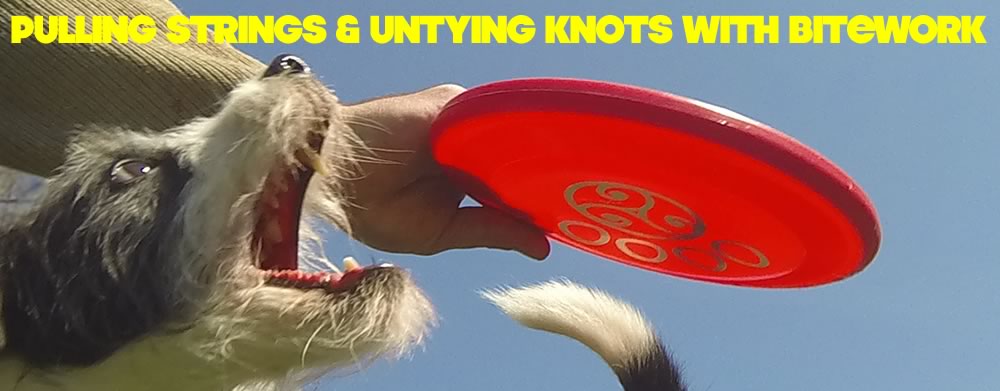
Pulling Strings and Untying Behavioral Knots with Bitework
solving problems with bitework is like untying a knot. work on one strand or maybe a couple at a time and tug, loosen, and manipulate those strands to free up space, or to align the strands so you can untie the knot.
Pulling Strings
You pull strings in bitework through reinforcement. Let’s say you have a Drop problem. You find the strings around the behavior that are holding up or stopping the drop and then you tease them a bit, tightening and loosening. This is not always a straight line kind of answer. Backchains can be difficult to spot Spot is a “go to a place”, or “go to a mat” behavior. This means that the dog seeks out and performs a duration behavior on a spot of the handler’s choosing. A... More and require creativity, intent, and belief in order to be leveraged.
Spot is a “go to a place”, or “go to a mat” behavior. This means that the dog seeks out and performs a duration behavior on a spot of the handler’s choosing. A... More and require creativity, intent, and belief in order to be leveraged.
You also need to loosen or tighten up strings to get at or see your problem in the first place. And then when you start to pull the string to untie the knot, the other strings will momentarily be affected. “Doh!” This is the hard part, ignoring those other strings for a moment (some of which are mighty important) while you attend to the task at hand.
Get a good, clean starting point and then pull the right string at the right time, apply or remove the proper amount of tension on the strings, and keep working at it and you untie the knot. It’s the same with fixing problems with bitework.
Bitework is Bite – Drop – Give
These are the money behaviors in bitework. If you have these skills on cue and under stimulus control, that is all there is to bitework, literally.
It’s not very difficult to cultivate this understanding with proper bitework introduction, but between Tug Of War played by pet owners, passionate dog sport rookies, and a session or two with mistakes from a seasoned pro, rarely does bitework get introduced clean and proper. So the game knots up and you wind up stuck on the dog running away with the disc or chewing on it, or not biting it well.
It’s often a remarkably fast lesson as well to fix these issues with a dog who is game to play. 2-5 minutes is a standard time for us to fix protracted and ingrained Bite, Drop, or Give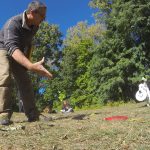 The Give is a retrieve to the hand. A cued Give is a foundational skill that is not super useful in the actual performance of disc dog freestyle, and has huge applications for... More problems with dogs using bitework or this string pulling idea in general.
The Give is a retrieve to the hand. A cued Give is a foundational skill that is not super useful in the actual performance of disc dog freestyle, and has huge applications for... More problems with dogs using bitework or this string pulling idea in general.
Just remember, as we dive into your dog’s behaviors and think yourself silly about their performance that Bitework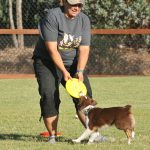 Bitework is an activity or a game that consists of biting and dropping a toy on cue. Cued Bites and cued Drops (and Gives) can be used to teach and reinforce many behaviors.... More (and Dog Frisbee) is nothing more than Bite – Drop – Give. All of our untying and pulling of behavioral strings is about isolating and reinforcing the Bite, the Drop and the Give.
Bitework is an activity or a game that consists of biting and dropping a toy on cue. Cued Bites and cued Drops (and Gives) can be used to teach and reinforce many behaviors.... More (and Dog Frisbee) is nothing more than Bite – Drop – Give. All of our untying and pulling of behavioral strings is about isolating and reinforcing the Bite, the Drop and the Give.
Knots Don’t Look Like Strings
Knots don’t look like strings, and they don’t act like them either. When you are untying a knot, it’s helpful to know that progress towards removing the knot is not some magical transformation, but it is a slow and painful easing and tightening up of individual strands. You can go a long way towards untying a knot without any sort of physical transformation. The changes are really visible when you are in tune and focused on pulling those strings. To observers or to a zoomed out perspective, there is no appreciable difference.
Tightening up one string often loosens another: “Great, now he’s taking it from me and running away!” “Ugh, he’s just taking it and chewing on it in front of me!” Yes, but he’s taking it from you now, right? Seems to me your knot just loosened up. Now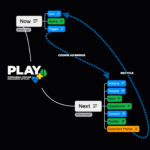 The Now Phase is an integral part of the Play Cycle in the Play+ training philosophy. It embodies the current, immediate interaction between the handler and the dog, anchoring them in the present... More you just need to find the right string to pull to address the new state of the knot. How about Give? or Drop?
The Now Phase is an integral part of the Play Cycle in the Play+ training philosophy. It embodies the current, immediate interaction between the handler and the dog, anchoring them in the present... More you just need to find the right string to pull to address the new state of the knot. How about Give? or Drop?
Seeing progress in your dog’s behavior is often hard because the handler envisions this beautifully slender and clean string of behavior, and they can’t for the life of them figure out how this knotted, tangled mess is going to become that string. It will. Knots are hard sometimes, solving them happens in very small steps, and while solving them strings tighten and loosen, and that’s OK.
Some Knots are Self Tightening
Knots are not defeated with muscle. They are not defeated with fear or intimidation. Knots are defeated with patience and understanding.
Bringing it back to dog training, you have to understand enough to read the situation correctly before you can try to fix it. You have to understand that there will be some give and take: some behaviors will tighten up and some will loosen a bit while pulling on that key string, patience is required to allow that to happen. Patience and understanding is the way you want to go about solving a knot.
Getting pissed off and tugging on both ends of the knot at once or trying to force it doesn’t really work. It makes the knots far more difficult, often near impossible to untie when you come to your senses and truly evaluate the situation. The knot might be smaller and more compact, easier to ignore, but it’s still there.
A best case scenario is that we pull that knot so tight that it’s no problem to use the string anyway. It still functions. We swing it around, “See, you can barely notice it,” but when you’re looking for pretty and perfection and you’re being judged? When you’re pushing the load limit on the string, super stress and high distraction? If your rope breaks, it will break at that taught knot.
Tight knots in a world class team’s game will most likely cost them a championship or two over the course of their career… speaking from experience.
10 Strings to Pull to Manage Drive and Untie Behavioral Knots
Think on this a bit, drop a comment below or share it with your dog training friends. Tomorrow I’ll lay out a list of conceptual strings that that you can pull on to untie behavioral knots with bitework.





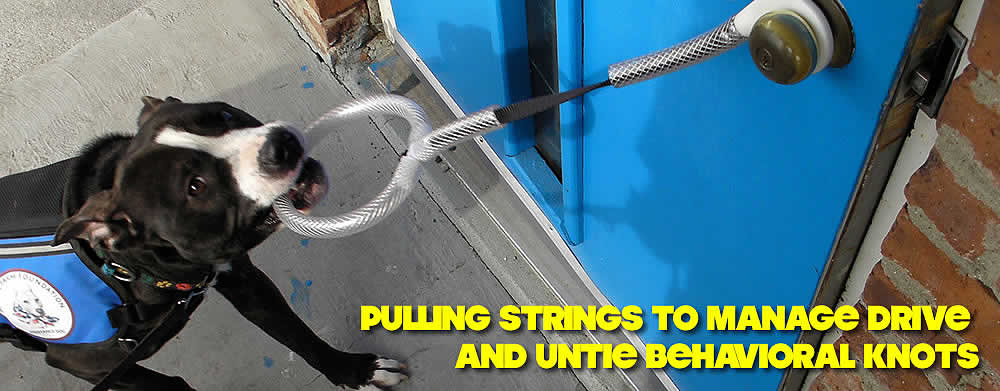
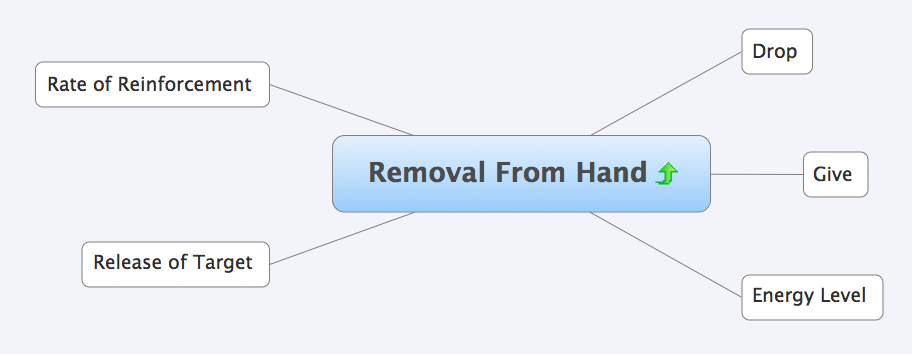
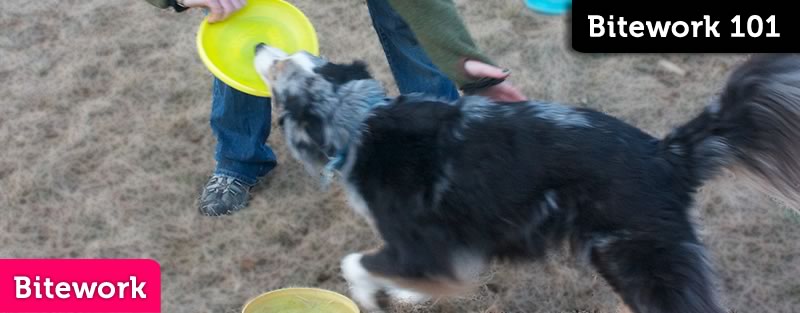
Good article! I am having these issues with my “Rockett”.
Thanks Jess! Hope it helps set your expectations appropriately. It can be really hard working through issues, and it can be darn near impossible if you don’t allow those other strings to tighten and loosen up momentarily while you work on your issue.